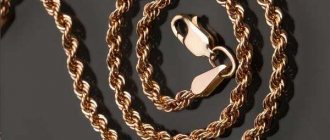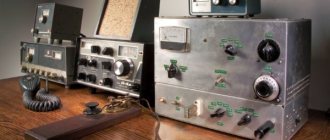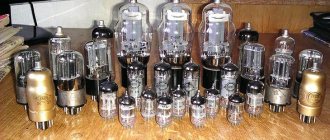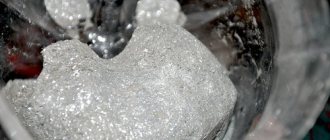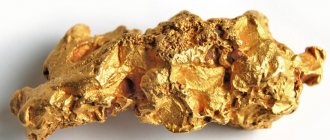The history of silver in Russia begins in the 10th century AD. However, this does not mean that Russia is rich in silver. In fact, most silver products were made from imported silver, which, of course, could not suit the growing state.
Starting from the 15th century, Russia actively searched for silver deposits, which were largely fruitful, although there was little silver in Russia. The state body responsible for the extraction of silver, as well as other ores, was established by Peter I. In general, Peter the Great gave a very powerful impetus to the development of silver mining. A year after the creation of the “Order of Mining Affairs,” samples of Nerchinsk silver were sent to the capital of Russia. After some time, the first silver smelting plant in Russia was launched - the Nerchinsk plant.
In the same 17th century, under Peter I, silver deposits were discovered in Altai, which began to produce an average of 16 tons of silver annually. The fact that Peter declared “Mountain Freedom” played a significant role in the development of the silver industry under Peter I. The essence of this decree was that now everyone could search for and mine precious metals, incl. and silver. With Catherine coming to power, this decree was canceled, but it fulfilled its role. Up until the 21st century, there was an expansion of the silver industry. Nowadays, Russia produces enough silver every year to live in this regard independently of other countries and supply silver for export. As a matter of fact, the expansion of production continues to this day, although it does not represent any particular benefit for the country.
Methods and methods for obtaining silver
Silver is obtained in laboratory and industrial conditions. The most effective method is to displace the precious metal from the salt concentrate with an active metal.
When isolating silver, the electrolytic method is often used, which allows one to obtain the purest silver without impurities. Isolation of silver from solutions containing different electrolytes. Using electrolysis, silver is formed in the sediment with small impurities of other metals, which are completely dissolved in nitrogen, ammonia or cyanide solutions. But this method is ineffective, since silver is often accompanied by a large amount of other metals (copper, selenium, tellurium, palladium, etc.), and therefore it is very difficult to refining with the release of pure silver.
To extract silver in industry from waste rock, the cyanide method is used, which is based on the dissolution of silver in a solution of sodium cyanide, when oxidation occurs with air, followed by the displacement of the metal by zinc.
The bulk of silver is obtained as a by-product during the processing of lead-zinc and copper ores.
70%-80% of the world's mined silver is obtained by processing complex sulfides of non-ferrous metals containing silver sulfide. For example, during the pyrometallurgical processing of copper, lead and zinc sulfides, silver is extracted from the ores in the form of silver-containing zinc, lead or copper. The next stage is the so-called Parkes or Pattison process, when silver-containing sulfides are enriched with silver, due to which the output is pure silver without an alloy.
Another popular method is the cupellation method.
Based on the chemical property of lead molten at 888°C to oxidize in air. This reaction causes the other alloy metals to oxidize and absorb lead into the crucible, releasing the silver.
Amalgamation (crushed silver-containing ores are treated with water and mercury) is also used as an industrial method for producing silver. The condition for this method is the presence of native silver (argenite or kerargite) or ores with a high content.
Metal cleaning
There are other methods for extracting pure silver, for example, the pyrometallurgical method. It is used only when the concentrate is lead or copper elements.
You may be interested in: How to clean a silver cross at home?
Raw copper compounds are placed in an electrical bath to cause electrolysis. Copper dissolves, and silver settles to the bottom.
Raw lead is treated with zinc at a high temperature of 450 degrees. Silver tends to gravitate towards zinc and thus dissolves better. The separated layer of silver and zinc is extracted and the next task is to separate the precious metal.
A temperature of 1250° can evaporate the zinc, but the silver does not remain in its pure form: lead and arsenic are still present. But after treatment with oxygen at 1000°, silver appears in a form in which it can be melted into ingots.
It should be noted that this is a fairly profitable method of purifying metal, since lead and copper are not expensive compounds, which means their processing does not require serious financial investments.
Silver mining in the world
Every year approximately 25 thousand tons of white precious metal are mined worldwide. Which silver-mining countries are considered the leaders in silver production?
Since the 19th century, all silver mining has been concentrated in South America (Mexico and Peru). And Peru and Poland have the largest reserves - according to preliminary calculations, there are 220 thousand tons of precious metal. The leader in silver production today is Mexico, where up to 200 mines operate to extract and obtain the metal.
China is also among the countries rich in silver deposits. There are not as many reserves here as, for example, in Poland, but there is much more silver production.
Russia, Kazakhstan, Australia, the USA, Bolivia and others are also doing well in the precious metal mining and production industry.
Available tools and materials
To refining silver at home and obtain metal without impurities, you need a little knowledge of chemistry (at the high school level), as well as the following materials:
- nitric acid 68.8%;
- deionized water;
- glass container;
- scales;
- quartz and brass sticks;
- titanium crucible (container for fusion);
- copper tubes or any other copper products;
- coffee filters;
- any power supply;
- plastic lemonade bottle;
- stainless steel fork and electrical tape;
- tea filter;
- insulation tube.
Where is silver mined in Russia
Silver mining and production in Russia is carried out in 20 regions and more than 100 deposits. The share of silver in the ores of these deposits is 100 grams per 1 ton. The leading ones are: Dukat, Lunnoe and Juliet in the Magadan region. About half of the total Russian volume of silver is mined at the mines of these deposits by silver mining companies.
Approximately a quarter of annual production occurs in the Ural regions. The Khakanja and Norilsk deposits are considered the weakest in terms of production, but also make a significant contribution to the Russian silver industry.
History of silver mining
Back in the 10th century, Byzantine rulers admired the beauty and sophistication of silver jewelry on Russian ambassadors. Russian tsars, starting with Ivan the Terrible, carried out exploration work in full swing throughout Rus' and hired ore craftsmen from abroad who knew the distinctive features of silver-containing ore deposits.
Thanks to Peter I, silver mining in Russia began intensively, with the development of deposits and the search for new mines.
The first pure silver was smelted in 1687, and in 1701 the first silver smelting plant was built in Transbaikalia.
The very first silver deposits in Russia were in Altai.
Silver mining companies
More than 25% of silver in Russia is mined. The company is in 9th place in the list of leading leaders in silver production per year. It includes small silver mining, “Silver Territories”, Yuryevskoye and Khakanjinskoye deposits and others.
Polymetal is followed in terms of volume by companies that mine silver as a by-product: Uchalinsky GOK, Norilsk Nickel and Gaisky GOK.
Silver samples
There can be no absolutely pure silver. No matter how carefully it is made, it still contains some amount of impurities. Typically this is most often copper, but nickel, bismuth, iron, lead and antimony are also found. To make special solders, cadmium and zinc are added to the silver composition.
Naturally, the need arises to somehow distinguish alloys of such a precious metal by purity and the presence of impurities. Historically, this problem found its solution in applying a mark to the surface of a silver product indicating the percentage of the base metal - fineness (for example: one kilogram of 925-grade silver contains 925 grams of silver).
It is clear that over such a long period of use in different countries, various samples were applied: from 325 to 1000. There are even unofficial (fake) samples that are often used by scammers (825). However, currently in Russia the following numerical expressions of the percentage of silver are considered officially recognized:
- The alloy of 800 and 830 samples is intended for the manufacture of cheap jewelry and cutlery.
- 875 standard is suitable for decorating interiors, dishes, and making a number of jewelry.
- 925 is sterling silver, from which the vast majority of jewelry sold is made; coins, signs, and interior items are also made.
- 960th - the most expensive jewelry, highly susceptible to deformation.
- 999th – solder – material for technical use, in the form of ingots intended for storage.
Production of silver in industry
Silver from copper silver-containing ores is smelted together with copper, and then it is separated from the anode sludge formed during electrolytic purification of copper.
When processing lead-zinc ores, the white metal is concentrated in lead alloys, from which it is extracted by adding metallic zinc, which forms with silver a refractory compound Ag2Zn3, insoluble in lead, which floats to the surface of the lead in the form of an easily removable foam.
Next, to separate silver from zinc, the latter is distilled off at 1250 °C. Silver extracted from copper or lead-zinc ores is smelted (Doré alloy) and subjected to electrolytic purification.
Hydrometallurgy
Electrochemical separation of silver from alloys.
This method relates to the hydrometallurgy of precious metals. Can be used in the processing of various types of polymetallic raw materials (radio-electronic parts, waste from the electronic and jewelry industries, etc.). Involves the anodic dissolution of silver in an aqueous solution with an anode from the feedstock and an insoluble cathode. Sodium sulfite is used as a solution and is carried out at a temperature of 18-50°C.
The result of this process is the selective extraction of silver, an increase in the rate of silver dissolution and the exclusion of toxic and hazardous substances from the electrolyte.
Scope of application
Chemical industry
One of the areas of silver consumption is traditionally the chemical industry. This is, first of all, special equipment designed for the production of phenol and glacial acetic acid. Also – covering a whole range of devices and their elements. Even high-grade silver pipes are manufactured to transport a number of highly aggressive liquids.
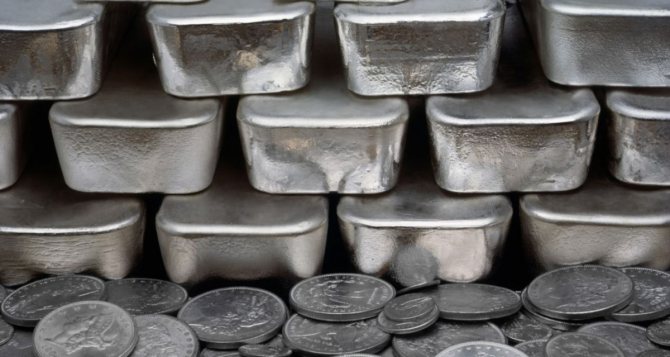
A huge number of laboratory glassware and instruments for the needs of the chemical industry contain silver. It is in it that the melting of alkalis and metal salts obtained from alkalis occurs.
Many chemical industry technologies use silver and its compounds as catalysts.
Production of contacts for various electrical products
Silver is also indispensable in the production of various electrical products. The so-called technical grade of this chemical element (999th grade) has an extremely high level of electrical conductivity, thermal conductivity and light reflection.
Wires, solders, contacts, and coatings made from this material have unique technical parameters. The list of products manufactured using silver includes many electronic elements:
- diodes, resistors, transistors, capacitors, microcircuits;
and electrical engineering:
- fuses, connectors, relays, cable products.
Battery production
Modern society wants to have a high level of comfort. To ensure this, we need miniature and durable sources of electric current. Here, silver-zinc miniature batteries, which have longevity and are capable of maintaining a stable voltage level for a long time at a high level of energy intensity, fully demonstrated their advantages.
Larger silver-zinc batteries, which are worthy competitors to their acid and alkaline counterparts, have similar qualities. They are in high demand in vehicles where there is no possibility of connecting to stationary power sources.
Jewelry industry
Due to a number of its features, namely: hygiene, durability, corrosion resistance, ductility, silver has been used as jewelry since ancient times. And not only as a 925 alloy, but also in combination with many other metals.
Thus, one of the cutting-edge developments is a silver-platinum alloy of increased hardness, which contains 5% platinum and at the same time has a high level of resistance to oxidizing agents. Don’t forget about the possibility of applying silver plating to many metal products.
Photo
A quarter of the world's silver production is used for photography. Even before its invention, the unique light-sensitive properties of this precious metal were used to create images, later called daggerotypes. Subsequently, light-sensitive materials created on the basis of silver halide crystals opened up the possibility of obtaining optimal photographs in a very short time.
Production of medals and other awards
Due to the ease of mechanical action in order to give the desired shape and apply the required image, silver, even at the dawn of civilization, was used as a material for the manufacture of various kinds of awards, symbols, memorial signs, orders and medals. And today many companies are ready to provide their services for creating this kind of product from silver-white metal at the request of the customer.
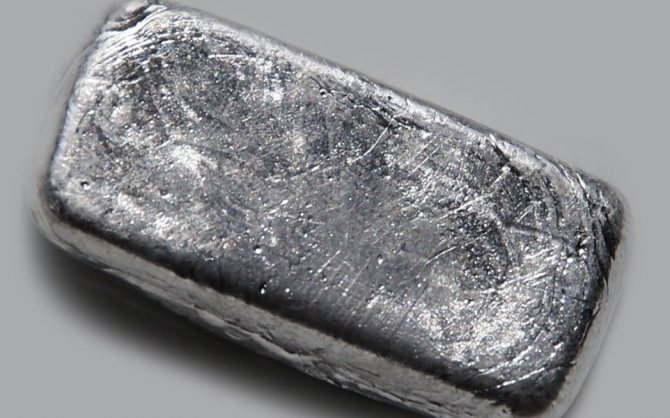
Coinage
We owe the appearance of the first coins to the inhabitants of the Lydian kingdom, located on the territory of modern Turkey. The craftsmen of that time, by striking a previously prepared and fairly hard stamp with a negative on a softer workpiece, received metal disks with the desired image. It is interesting that even in those days, silver, so convenient for such a task, was used as a material for blanks.
Over the past years, the essence of coinage technology has undergone some changes. A variety of metals and alloys were used. However, in the production of money, the role of precious metals, which have a high value with minimal sizes and at the same time retain their shape for a long time without being subject to destruction and corrosion, remains at the same – highly in demand level. Silver continues to occupy a worthy place among them.
Making mirrors
The high reflective properties of “white metal” were useful for making mirrors. One of the most indispensable attributes of the life of a modern person. In addition to helping in the desire to look good, mirrors allow you to look into the most inaccessible places (internal organs checked during medical examinations, studies of mechanisms, study of complex structures) and significantly expand the horizons of visual perception (the rear view of cars).
Modern technology for manufacturing mirrored reflective surfaces uses three layers of glass coating:
- the first - silver amalgam,
- the second - a silver film,
- the third - polymers.
Medicine and others
From antiquity to the present day, silver, as well as a number of its compounds, have been used in medicine. Possessing antibacterial, astringent properties, as well as a cauterizing effect, preparations from this metal were actively used to treat rheumatic, septic, respiratory and gastrointestinal diseases.
It can be stated with confidence that the predecessor of modern antibiotics was silver, which at one time was widely used in the fight against infectious diseases. Today on pharmacy shelves you can find many drugs containing silver. In addition, it is used to make bactericidal paper, respiratory masks, implants, and even microparticles for studying the human body for diseases.
Other uses include the digestive industry, which installs silver in its apparatus, as well as the process of managing precipitation to cause rain or, conversely, to prevent it. By influencing the clouds with ions of this noble element, the release of moisture from them in the form of rain is provoked in advance, which makes it possible to organize the desired weather in a certain place.
Silver reserves in the world
Today, about 600 thousand tons of proven reserves of silver are found in the leading countries in the mining and production of this precious metal.
Table for 2021 shows global silver reserves.
In 2021, silver reserves in Peru increased to 12 thousand tons, while in Poland, on the contrary, they decreased to 10 thousand tons. According to experts, 2014 was the year of peak silver production, but in 2021 it overtook the figures and increased to 27 thousand tons.
In 2021, according to expert forecasts, about 212 million ounces of the precious metal should be produced in Mexico.
